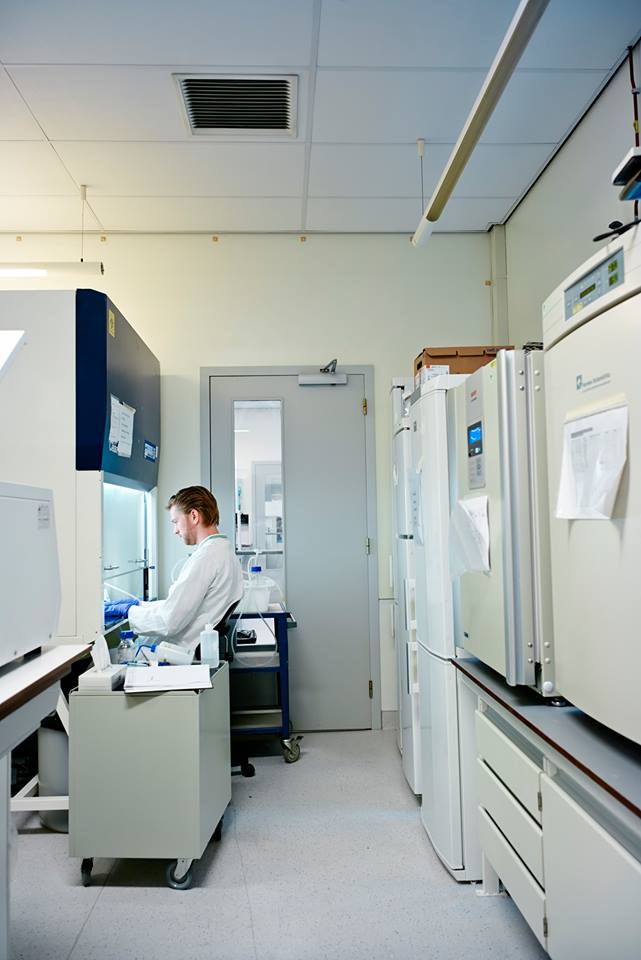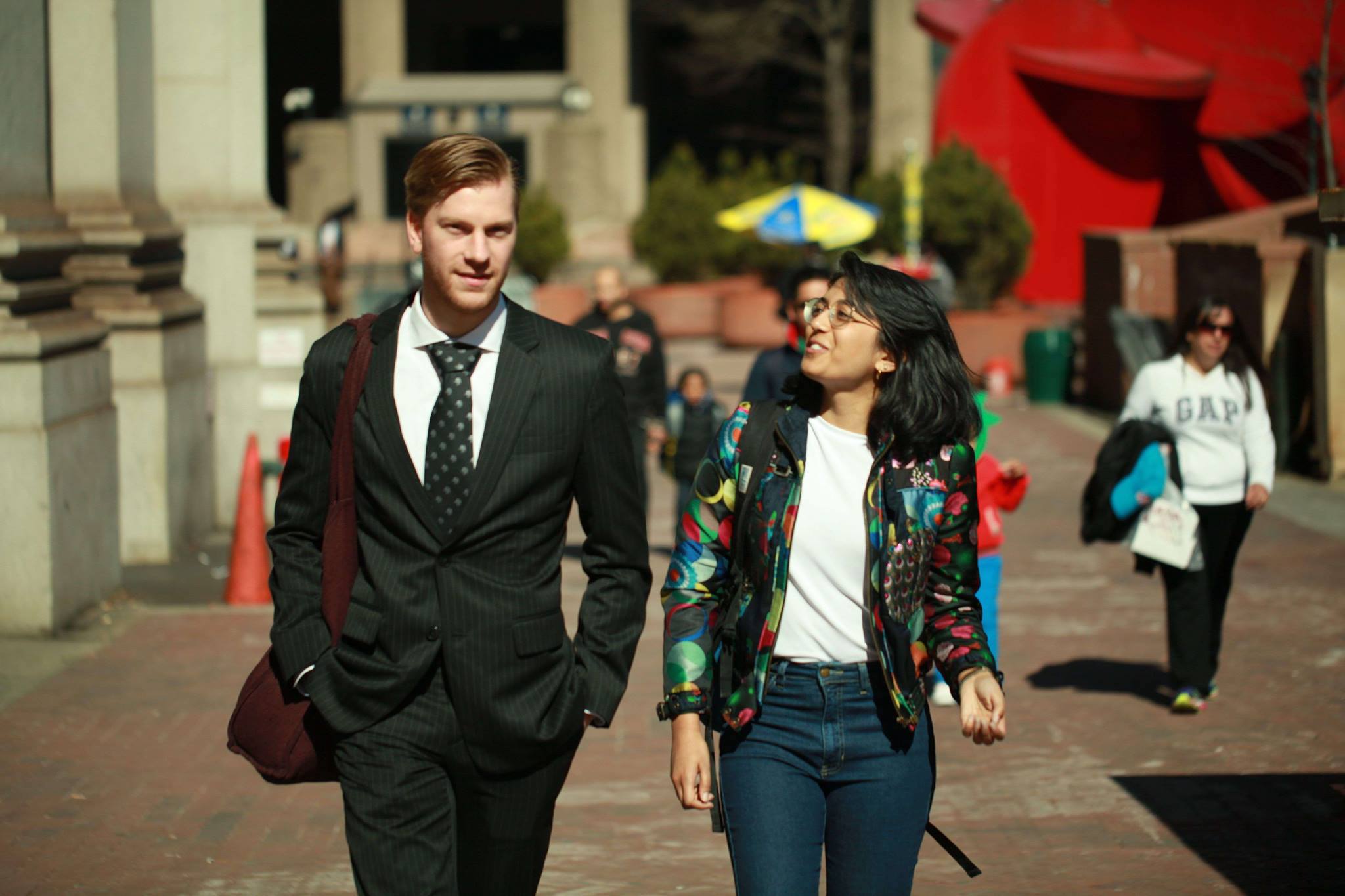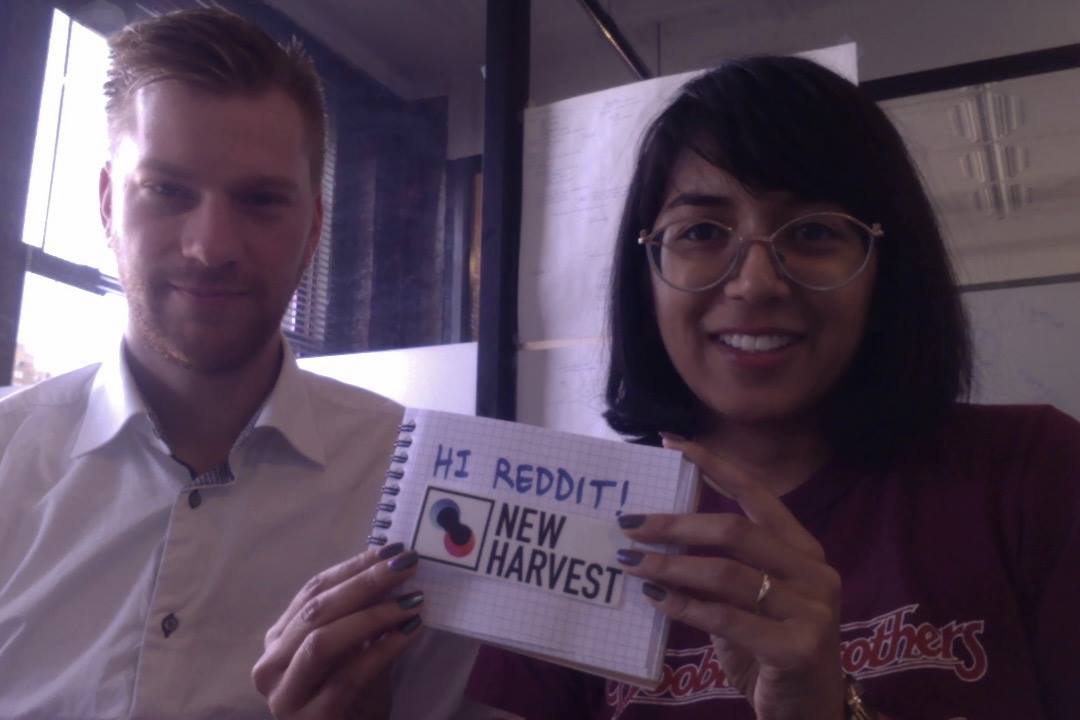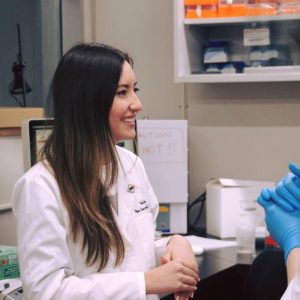NH: Hi Daan! It’s great to speak with you and learn more about your path to cellular agriculture. How did your academic career start?
DL: Well I was in school for a very long time. I wasn’t a great student in high school, but I was interested in science and went that route. My first internship was for BaseClear, an auto-sequencing company running 2000 reactions per day. I worked there for nine months and then started working in toxicology at a local hospital. I was there for two weeks and really didn’t like it. Luckily my supervisor helped me to get an internship at the research center, studying mass spectrometry. I loved it – I consider it one of my passions next to tissue engineering. Working there, I realized all the fun stuff was done by people with higher level degrees and decided to pursue a Master’s degree.
NH: How did the Master’s program lead you to Dr. Post’s lab?
DL: I had heard about the cultured hamburger and wanted to develop the skills necessary for the research. I spent the last nine months of my Bachelor’s program researching the vascularization of fibrous scaffolds. The purpose was to vascularize organs before transplantation, induce angiogenesis in endothelial cells under lack of oxygen. I learned all the cell culture techniques needed to work in Dr. Post’s lab and then I reached out to him. After a Skype chat, three weeks later I went to Maastricht.

NH: Tell us about your experience in the lab.
DL: I joined in October 2014 and left in the summer of 2015. The team was small, three people other than myself. Only two of us were devoted to the project full-time. It was smaller than I was expecting. The media hyped it up way too much! It was really only two lab techs performing old fashioned cell culture, spreading cells and replating over and over again. The lab was great though, I loved the other people there. Since I had all the relevant experience, they quickly let me loose to manage my own projects.
Being in Maastricht was challenging. Everyone would leave on the weekends to go home or elsewhere. I shuttled back to Amsterdam every weekend because I worked in a distillery. And once a month I had class… It was a crazy time. Not the best time to be around me, I can tell you that. I was originally supposed to stay for five months, but five turned into seven which turned into nine. Five months would have been too short. To get some nice data, you need more time (Daan’s publication can be accessed here!).
NH: Could you have stayed for longer?
DL: Unfortunately not. There wasn’t enough money for that. Anyways, I needed to complete the next part of my Master’s degree. It was an cool program called “Science Based Business”. I had more than enough science experience and needed a business based internship. So interning at New Harvest made a lot of sense, it was a perfect opportunity.

NH: What got you interested in cultured meat in the first place?
DL: I saw Anthony Atala’s TED Talk about organ engineering a 3D printed kidney and bladder. He cultured a bladder from a patient’s own cells, placed it back into the patient, and it worked! So my interest in tissue engineering led me to cultured meat. I see the potential in it. But I’m not in it for animal rights reasons. I mean, that’s nice, I’m totally for saving the animals – But I’m not in it for that.
NH: Why cultured meat instead of a medical application?
DL: Medical tissue engineering is so saturated. Cultured meat has the potential. I can contribute in a big way instead of a small piece of incremental, negligible medical research. I personally really did not want to do a Ph.D.
NH: Haha, I see! Well I’m glad you made that choice and it has all led you here, to New Harvest. What have you been working on so far?
DL: I’ve only been in New York for about two months. Right away we did a Reddit AMA which was awesome. I liked being able to tell people what is really going on without all the media hype. We were on the front page of Reddit for a while, with 8 million visitors. At the same time – I’m so tired of people talking about it without doing anything. Everyone is contemplating the future of cultured meat and I sometimes want to yell: “Who knows what you are speculating about? There’s hardly any money [going towards the research]. Instead of talking endlessly, why not put some money or work in and really find out?!”
Mainly I will be working on New Harvest’s scientific strategy moving forward. Prioritizing research projects, outlining next steps to advance the field. For example answering questions like: what is feasible, how should we approach this, what cell types should be used. I contact researchers and connect them with one another. I qualify grant candidates, assess applications. We also applied for the Fuller Challenge Grant and the Shuttleworth Grant. And I recently gave a presentation to students at NYU’s Sustainability Summit.
NH: Do you have any new information you can share about progress being made?
DL: Well, products so far have been made with bovine cells. But beef is hard to culture! Chicken, on the other hand, is easy. Chicken cells grow like crazy. Tuna is also easy! No nutrients, CO2, incubators. They grow at 25 C instead of 37 C. But, tuna is hard to get. I would love to get on a boat and catch a tuna for some cells!
NH: What do you do outside of work?
DL: I recently went to a Pint of Science Meetup, super fun event with really interesting people. Back in the Netherlands I do some DIY Bio stuff. I love to dance! I’m going to the Boom festival in Portugal.
Another interest of mine is space. When I was young I joined a local observatory club. My end goal is to bring cultured meat to Mars. When the time is right, shoot me into outer space and I’ll sustain a population over there.




